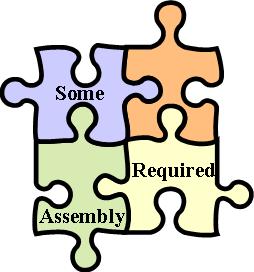 
ONCE UPON A TIME, presbyteries were small and intimate. Travel to meetings was not a burden. Staff consisted of a stated clerk and maybe a secretary. Many were part-time. Some of you may remember when Homestead Presbytery was created out of four presbyteries.
WHY? Why was it a "good idea" to make presbyteries so large? It was done at a time when many program ministries were devolving from General Assembly and Synod (which was the major program body) to presbyteries. It was thought that in order for a presbytery to do all that was being required, about 20,000 members would be needed. Of course, that was never possible for most of the Church. But the move was attempted anyway.
Now, pastors bemoan that after years in the presbytery, they still have never met other pastors who also have been here for years, but serve across the vast presbytery. The presbytery leader (Executive) is often unknown in the pews simply because of distance for visits.
Can we return to the days of smaller presbyteries? Technically yes. It is possible to form smaller presbyteries and to have a smaller synod to do the programming. It won't happen nationwide. It is possible for presbyteries to reform with permission of Synod and General Assembly on a regional by region basis. Practically speaking, this would be difficult or impossible. The mindset is still "bigger is better". There is also a strong bias against synods in much of the denomination. Repeated attempts over recent years to abolish synods have been strong at General Assemblies. Making more synods doesn't make sense to many.
Another option is to create pseudo-presbyteries. Our new
Book of Order encourages creativity with its flexible foundation. In Homestead, three or four regional commissions could be created and given all the authority of the presbytery. The commissioners would act as pseudo-presbyteries. They could welcome new ministers into their area; set their own meeting schedule and places; help congregations/pastors; nurture candidates; review minutes; essentially BE the presbytery for their congregations and ministers. These commissions would be small enough to live out the connectional nature of the denomination that has been lost by the enlarged presbytery structure. Each commission would have a volunteer Associate Presbytery Stated Clerk who would serve as the pseudo-clerk for the commission. The commissions would report their minutes to the Homestead Presbytery which would meet twice each year. The Homestead Presbytery would remain the major program entity for the region. However, the presbytery staff could be reduced to one Stated Clerk/Executive which may be part-time, and one office secretary.
Food for Thought. Would this be an improvement? Keep Thinking!
|